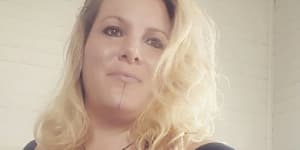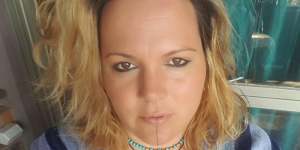“It’s not good,” Lechner said before she fell unconscious.

Natasha Lechner,39,was remembered as a “gentle,bright and kind woman”.Supplied
She never woke up.
An inquest on Friday found Lechner,39,died from an acute cardiac event triggered by the toxin,known as kambo,which a friend applied during the ritual at her Mullumbimby home in March 2019.
State Coroner Teresa O’Sullivan noted Lechner’s was one of two deaths in NSW that have shone a recent spotlight on the use of kambo,which has been banned in Australia since October 2021.
A separate inquest is examining the death of Jarrad Antonovich,46,after he took kambo and the plant-based psychedelic ayahuasca at the Dreaming Arts festival north of Kyogle in 2021.
“This inquest,and the inquest into the tragic death of Jarrad Antonovich,have highlighted the risk of serious illness and death from kambo,and the importance of accessing urgent medical attention,” O’Sullivan said.
Kambo is a waxy substance harvested by scraping the skin of a giant monkey tree frog,Phyllomedusa bicolor,and is often used as traditional medicine in healing or cleansing rituals in South America. In a kambo ceremony,a person’s skin on their arm or leg is burnt before the frog toxin is dotted on the wounds to trigger vomiting or purging.
On the morning of March 8,2019,Lechner held a “paired” kambo ceremony with her friend,Victoria Sinclair,who had trained as a kambo practitioner in Mexico and was visiting from Ireland.
Lechner administered kambo to Sinclair,who vomited and quickly recovered.

Lechner died at a house in Mullumbimby on March 8,2019.Supplied
Sinclair then used a lit incense candle to burn five wounds on Lechner’s chest and left wrist,before dotting the wounds with kambo. Lechner immediately began to feel faint,but did not vomit.
She lay down on the floor for about two minutes before she sat up,clutched Sinclair’s arm and said,“This is not good” or “Something’s not right”,and lost consciousness.
Sinclair tried to phone for help but did not know the number to call for emergency services.
A friend who arrived soon after tried to resuscitate Lechner and called an ambulance.
Paramedics arrived minutes later,but she could not be revived.
The inquest heard Lechner had lived with severe back pain and grew interested in alternative medicine,including kambo,several years before her death. She completed a two-week basic training course run by the International Association of Kambo Practitioners at a retreat in northern NSW in January 2019. O’Sullivan said it was “clear Natasha took her role as a kambo practitioner seriously”.
O’Sullivan said while there was no credible research about the medicinal benefits of kambo,there were “clear and identified risks that are underestimated by some of its proponents”.
These included a risk of death,liver damage,heart attack,stomach pain and damage to the stomach walls and oesophagus.
O’Sullivan said the information discussed with participants at the course Lechner completed had referred to the risk of fainting,electrolyte imbalance,burns,swelling and possible death if participants had pre-existing medical conditions. She described the information as “incomplete and does not properly advise participants of the true risks of engaging with kambo,even for healthy people”.
“It is clear … that death can occur even when there is no pre-existing condition,or at least not one that could possibly be identified beforehand.”
O’Sullivan said she would have recommended kambo be made illegal had the Therapeutic Goods Administration not already banned it on the grounds it posed a danger to human health.
“While regulators must balance risk of harm with personal liberties,it appears to me that a number of vulnerable people are drawn to using kambo in circumstances where those who administer it may hold themselves out as part of a healing profession and yet lack of training in basic first aid,” O’Sullivan said.
“Those persons may not be prepared themselves for what to do in an emergency.”
The inquest into Antonovich’s death has heard he suffered a perforated oesophagus,which can be caused by severe vomiting,or attempts to vomit,triggered by the use of kambo and ayahuasca.
That inquest has been adjourned until May after new witnesses came forward.
